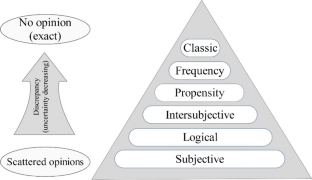Logic tree branches’ weights in the probabilistic seismic hazard analysis: the need to combine inter-subjective and propensity probability interpretations
Abstract
Probabilistic seismic hazard analysis (PSHA) is the primary method for determining the earthquake forces as input to structural seismic evaluation and design. Epistemic uncertainty has been incorporated into the PSHA process using a logic tree. One of the main challenges in using logic trees is determining ground motion prediction equations (GMPEs) and their branches’ weights. In this paper, regarding the different definitions of probability, the philosophy of GMPE selection and logic tree branches’ weight allocation in the PSHA is investigated. The results show that the classical and frequency definitions of probability are not applicable in the selection and weight allocation process. We suggest that the best way to allocate weight can be obtained by combining the inter-subjective and propensity probability definitions. To evaluate the effect of weight allocation on the PSHA results, PSHA was performed for a site in Tehran using different selection and weighting approaches. The results of the numerical example show up to a 50% variation in the spectral acceleration in the range of common building periods. We show that the issue of GMPE selection and weight allocation has not been adequately addressed in the current procedures of PSHA. So, it is necessary to develop specific agendas in this field.


 求助内容:
求助内容: 应助结果提醒方式:
应助结果提醒方式:


